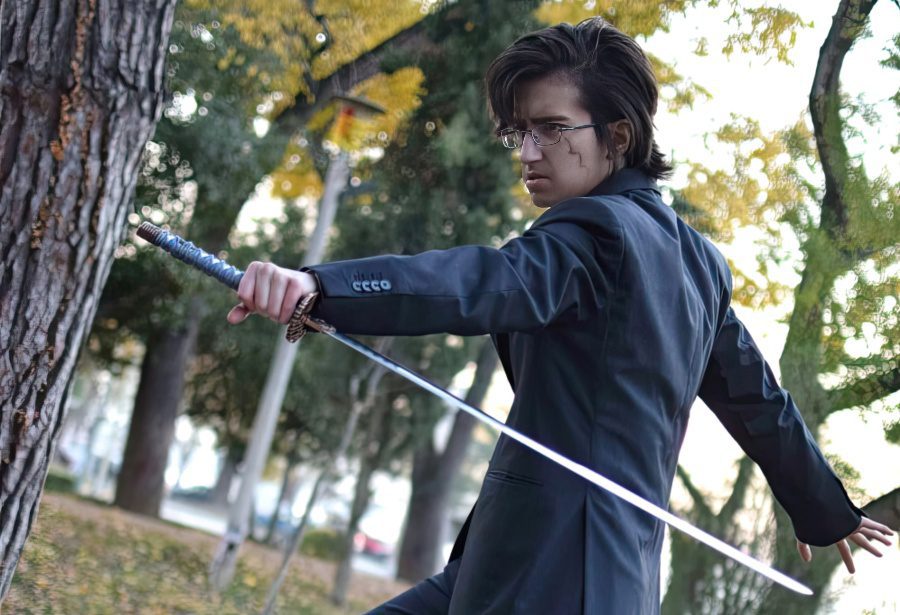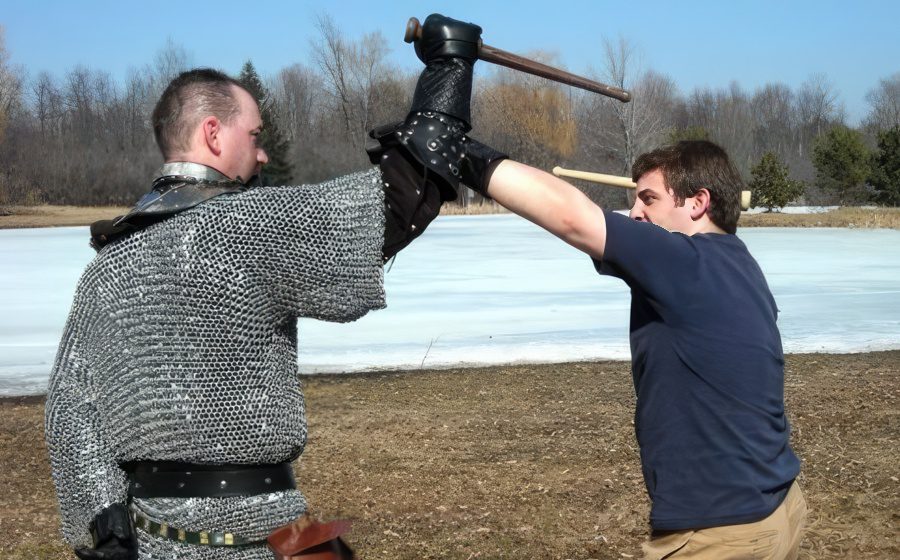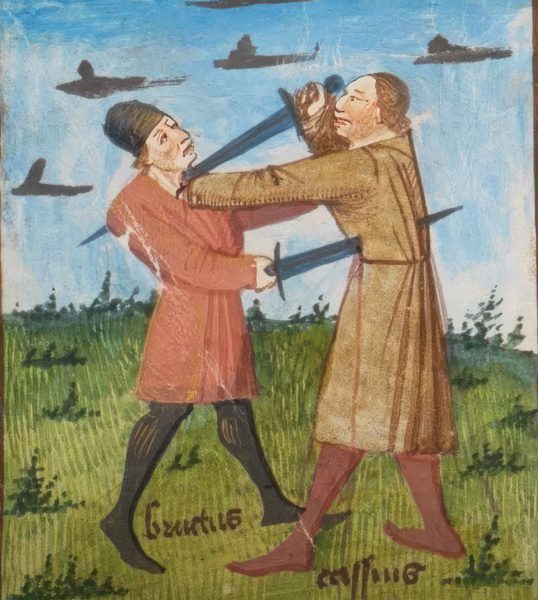u003colu003ern tu003cliu003eu003cspan data-sheets-root=u00221u0022 data-sheets-value=u0022{u0026quot;1u0026quot;:2,u0026quot;2u0026quot;:u0026quot;1. Windsor, G. (2013, October 15). The Duellist’s Companion.
2. Windsor, G. (2004, August 15). The Swordsman’s Companion: A Modern Training Manual for Medieval Longsword.
3. Wikipedia, S. (2013, September 1). Historical European Martial Arts: Pankration, Tournament, Fiore Dei Liberi, Jousting, Association for Renaissance Martial Arts, German School of Fencing. University-Press.org.
4. Brunswick, E. (2015, November 18). Historical European Martial Arts.
5. Burton, R. F. (1987, July 1). The Book of the Sword: With 293 Illustrations.
6. Oakeshott, E. (1998, October 29). The Sword in the Age of Chivalry.
7. Oakeshott, R. E. (1996, October 18). The Archaeology of Weapons: Arms and Armour from Prehistory to the Age of Chivalry.
8. Oakeshott, E. (2000, September 1). European Weapons and Armour: From the Renaissance to the Industrial Revolution.
9. Warford, A. A., u0026amp; Stephens, T. (2013, July 1). Fighting with Edge and Point: Two Guides to Use of the Broad Sword, Small Sword, Fencing and Other Martial Weapons and Exercises.
10. Marsden, R. (2018, June 25). Historical European Martial Arts in Its Context: Single-Combat, Duels, Tournaments, Self-Defense, War, Masters and Their Treatises.u0026quot;}u0022 data-sheets-userformat=u0022{u0026quot;2u0026quot;:513,u0026quot;3u0026quot;:{u0026quot;1u0026quot;:0},u0026quot;12u0026quot;:0}u0022u003eWindsor, G. (2013, October 15). u003ca href=u0022https://books.google.com.ph/books?id=znXjngEACAAJu0026amp;dq=The+Duellist%E2%80%99s+Companionu0026amp;hl=enu0026amp;newbks=1u0026amp;newbks_redir=1u0026amp;sa=Xu0026amp;ved=2ahUKEwiLm53fhoiGAxXqcmwGHTJBDQ8Q6AF6BAgGEAIu0022u003eThe Duellist’s Companionu003c/au003e.u003c/spanu003eu003c/liu003ern tu003cliu003eu003cspan data-sheets-root=u00221u0022 data-sheets-value=u0022{u0026quot;1u0026quot;:2,u0026quot;2u0026quot;:u0026quot;1. Windsor, G. (2013, October 15). The Duellist’s Companion.
2. Windsor, G. (2004, August 15). The Swordsman’s Companion: A Modern Training Manual for Medieval Longsword.
3. Wikipedia, S. (2013, September 1). Historical European Martial Arts: Pankration, Tournament, Fiore Dei Liberi, Jousting, Association for Renaissance Martial Arts, German School of Fencing. University-Press.org.
4. Brunswick, E. (2015, November 18). Historical European Martial Arts.
5. Burton, R. F. (1987, July 1). The Book of the Sword: With 293 Illustrations.
6. Oakeshott, E. (1998, October 29). The Sword in the Age of Chivalry.
7. Oakeshott, R. E. (1996, October 18). The Archaeology of Weapons: Arms and Armour from Prehistory to the Age of Chivalry.
8. Oakeshott, E. (2000, September 1). European Weapons and Armour: From the Renaissance to the Industrial Revolution.
9. Warford, A. A., u0026amp; Stephens, T. (2013, July 1). Fighting with Edge and Point: Two Guides to Use of the Broad Sword, Small Sword, Fencing and Other Martial Weapons and Exercises.
10. Marsden, R. (2018, June 25). Historical European Martial Arts in Its Context: Single-Combat, Duels, Tournaments, Self-Defense, War, Masters and Their Treatises.u0026quot;}u0022 data-sheets-userformat=u0022{u0026quot;2u0026quot;:513,u0026quot;3u0026quot;:{u0026quot;1u0026quot;:0},u0026quot;12u0026quot;:0}u0022u003eWindsor, G. (2004, August 15). u003ca href=u0022https://books.google.com.ph/books?id=wM7QEAAAQBAJu0026amp;pg=PT8u0026amp;dq=The+Swordsman%E2%80%99s+Companion:+A+Modern+Training+Manual+for+Medieval+Longswordu0026amp;hl=enu0026amp;newbks=1u0026amp;newbks_redir=1u0026amp;sa=Xu0026amp;ved=2ahUKEwi9gNfkhoiGAxWqS2wGHeIeAzIQ6AF6BAgBEAIu0022u003eThe Swordsman’s Companion: A Modern Training Manual for Medieval Longswordu003c/au003e.u003c/spanu003eu003c/liu003ern tu003cliu003eu003cspan data-sheets-root=u00221u0022 data-sheets-value=u0022{u0026quot;1u0026quot;:2,u0026quot;2u0026quot;:u0026quot;1. Windsor, G. (2013, October 15). The Duellist’s Companion.
2. Windsor, G. (2004, August 15). The Swordsman’s Companion: A Modern Training Manual for Medieval Longsword.
3. Wikipedia, S. (2013, September 1). Historical European Martial Arts: Pankration, Tournament, Fiore Dei Liberi, Jousting, Association for Renaissance Martial Arts, German School of Fencing. University-Press.org.
4. Brunswick, E. (2015, November 18). Historical European Martial Arts.
5. Burton, R. F. (1987, July 1). The Book of the Sword: With 293 Illustrations.
6. Oakeshott, E. (1998, October 29). The Sword in the Age of Chivalry.
7. Oakeshott, R. E. (1996, October 18). The Archaeology of Weapons: Arms and Armour from Prehistory to the Age of Chivalry.
8. Oakeshott, E. (2000, September 1). European Weapons and Armour: From the Renaissance to the Industrial Revolution.
9. Warford, A. A., u0026amp; Stephens, T. (2013, July 1). Fighting with Edge and Point: Two Guides to Use of the Broad Sword, Small Sword, Fencing and Other Martial Weapons and Exercises.
10. Marsden, R. (2018, June 25). Historical European Martial Arts in Its Context: Single-Combat, Duels, Tournaments, Self-Defense, War, Masters and Their Treatises.u0026quot;}u0022 data-sheets-userformat=u0022{u0026quot;2u0026quot;:513,u0026quot;3u0026quot;:{u0026quot;1u0026quot;:0},u0026quot;12u0026quot;:0}u0022u003eWikipedia, S. (2013, September 1). Historical European Martial Arts: Pankration, Tournament, Fiore Dei Liberi, Jousting, Association for Renaissance Martial Arts, German School of Fencing. University-Press.org.u003c/spanu003eu003c/liu003ern tu003cliu003eu003cspan data-sheets-root=u00221u0022 data-sheets-value=u0022{u0026quot;1u0026quot;:2,u0026quot;2u0026quot;:u0026quot;1. Windsor, G. (2013, October 15). The Duellist’s Companion.
2. Windsor, G. (2004, August 15). The Swordsman’s Companion: A Modern Training Manual for Medieval Longsword.
3. Wikipedia, S. (2013, September 1). Historical European Martial Arts: Pankration, Tournament, Fiore Dei Liberi, Jousting, Association for Renaissance Martial Arts, German School of Fencing. University-Press.org.
4. Brunswick, E. (2015, November 18). Historical European Martial Arts.
5. Burton, R. F. (1987, July 1). The Book of the Sword: With 293 Illustrations.
6. Oakeshott, E. (1998, October 29). The Sword in the Age of Chivalry.
7. Oakeshott, R. E. (1996, October 18). The Archaeology of Weapons: Arms and Armour from Prehistory to the Age of Chivalry.
8. Oakeshott, E. (2000, September 1). European Weapons and Armour: From the Renaissance to the Industrial Revolution.
9. Warford, A. A., u0026amp; Stephens, T. (2013, July 1). Fighting with Edge and Point: Two Guides to Use of the Broad Sword, Small Sword, Fencing and Other Martial Weapons and Exercises.
10. Marsden, R. (2018, June 25). Historical European Martial Arts in Its Context: Single-Combat, Duels, Tournaments, Self-Defense, War, Masters and Their Treatises.u0026quot;}u0022 data-sheets-userformat=u0022{u0026quot;2u0026quot;:513,u0026quot;3u0026quot;:{u0026quot;1u0026quot;:0},u0026quot;12u0026quot;:0}u0022u003eBrunswick, E. (2015, November 18). u003ca href=u0022https://books.google.com/books?id=zvkKjwEACAAJu0026amp;dq=Historical+European+Martial+Artsu0026amp;hl=enu0026amp;newbks=1u0026amp;newbks_redir=1u0026amp;sa=Xu0026amp;ved=2ahUKEwjr9d7thoiGAxVMbWwGHY0bBUMQ6AF6BAgJEAIu0022u003eHistorical European Martial Artsu003c/au003e.u003c/spanu003eu003c/liu003ern tu003cliu003eu003cspan data-sheets-root=u00221u0022 data-sheets-value=u0022{u0026quot;1u0026quot;:2,u0026quot;2u0026quot;:u0026quot;1. Windsor, G. (2013, October 15). The Duellist’s Companion.
2. Windsor, G. (2004, August 15). The Swordsman’s Companion: A Modern Training Manual for Medieval Longsword.
3. Wikipedia, S. (2013, September 1). Historical European Martial Arts: Pankration, Tournament, Fiore Dei Liberi, Jousting, Association for Renaissance Martial Arts, German School of Fencing. University-Press.org.
4. Brunswick, E. (2015, November 18). Historical European Martial Arts.
5. Burton, R. F. (1987, July 1). The Book of the Sword: With 293 Illustrations.
6. Oakeshott, E. (1998, October 29). The Sword in the Age of Chivalry.
7. Oakeshott, R. E. (1996, October 18). The Archaeology of Weapons: Arms and Armour from Prehistory to the Age of Chivalry.
8. Oakeshott, E. (2000, September 1). European Weapons and Armour: From the Renaissance to the Industrial Revolution.
9. Warford, A. A., u0026amp; Stephens, T. (2013, July 1). Fighting with Edge and Point: Two Guides to Use of the Broad Sword, Small Sword, Fencing and Other Martial Weapons and Exercises.
10. Marsden, R. (2018, June 25). Historical European Martial Arts in Its Context: Single-Combat, Duels, Tournaments, Self-Defense, War, Masters and Their Treatises.u0026quot;}u0022 data-sheets-userformat=u0022{u0026quot;2u0026quot;:513,u0026quot;3u0026quot;:{u0026quot;1u0026quot;:0},u0026quot;12u0026quot;:0}u0022u003eBurton, R. F. (1987, July 1). u003ca href=u0022https://books.google.com.ph/books?id=GJmrEX63LZUCu0026amp;printsec=frontcoveru0026amp;dq=The+Book+of+the+Sword:+With+293+Illustrationsu0026amp;hl=enu0026amp;newbks=1u0026amp;newbks_redir=1u0026amp;sa=Xu0026amp;ved=2ahUKEwiisbv1hoiGAxWRfWwGHVb6AZgQ6AF6BAgJEAIu0022u003eThe Book of the Sword: With 293 Illustrationsu003c/au003e.u003c/spanu003eu003c/liu003ern tu003cliu003eu003cspan data-sheets-root=u00221u0022 data-sheets-value=u0022{u0026quot;1u0026quot;:2,u0026quot;2u0026quot;:u0026quot;1. Windsor, G. (2013, October 15). The Duellist’s Companion.
2. Windsor, G. (2004, August 15). The Swordsman’s Companion: A Modern Training Manual for Medieval Longsword.
3. Wikipedia, S. (2013, September 1). Historical European Martial Arts: Pankration, Tournament, Fiore Dei Liberi, Jousting, Association for Renaissance Martial Arts, German School of Fencing. University-Press.org.
4. Brunswick, E. (2015, November 18). Historical European Martial Arts.
5. Burton, R. F. (1987, July 1). The Book of the Sword: With 293 Illustrations.
6. Oakeshott, E. (1998, October 29). The Sword in the Age of Chivalry.
7. Oakeshott, R. E. (1996, October 18). The Archaeology of Weapons: Arms and Armour from Prehistory to the Age of Chivalry.
8. Oakeshott, E. (2000, September 1). European Weapons and Armour: From the Renaissance to the Industrial Revolution.
9. Warford, A. A., u0026amp; Stephens, T. (2013, July 1). Fighting with Edge and Point: Two Guides to Use of the Broad Sword, Small Sword, Fencing and Other Martial Weapons and Exercises.
10. Marsden, R. (2018, June 25). Historical European Martial Arts in Its Context: Single-Combat, Duels, Tournaments, Self-Defense, War, Masters and Their Treatises.u0026quot;}u0022 data-sheets-userformat=u0022{u0026quot;2u0026quot;:513,u0026quot;3u0026quot;:{u0026quot;1u0026quot;:0},u0026quot;12u0026quot;:0}u0022u003eOakeshott, E. (1998, October 29). u003ca href=u0022https://books.google.com.ph/books?id=TYcBwoeWwp0Cu0026amp;printsec=frontcoveru0026amp;dq=The+Sword+in+the+Age+of+Chivalryu0026amp;hl=enu0026amp;newbks=1u0026amp;newbks_redir=1u0026amp;sa=Xu0026amp;ved=2ahUKEwimt6D5hoiGAxVSS2cHHVKJCRMQ6AF6BAgMEAIu0022u003eThe Sword in the Age of Chivalryu003c/au003e.u003c/spanu003eu003c/liu003ern tu003cliu003eu003cspan data-sheets-root=u00221u0022 data-sheets-value=u0022{u0026quot;1u0026quot;:2,u0026quot;2u0026quot;:u0026quot;1. Windsor, G. (2013, October 15). The Duellist’s Companion.
2. Windsor, G. (2004, August 15). The Swordsman’s Companion: A Modern Training Manual for Medieval Longsword.
3. Wikipedia, S. (2013, September 1). Historical European Martial Arts: Pankration, Tournament, Fiore Dei Liberi, Jousting, Association for Renaissance Martial Arts, German School of Fencing. University-Press.org.
4. Brunswick, E. (2015, November 18). Historical European Martial Arts.
5. Burton, R. F. (1987, July 1). The Book of the Sword: With 293 Illustrations.
6. Oakeshott, E. (1998, October 29). The Sword in the Age of Chivalry.
7. Oakeshott, R. E. (1996, October 18). The Archaeology of Weapons: Arms and Armour from Prehistory to the Age of Chivalry.
8. Oakeshott, E. (2000, September 1). European Weapons and Armour: From the Renaissance to the Industrial Revolution.
9. Warford, A. A., u0026amp; Stephens, T. (2013, July 1). Fighting with Edge and Point: Two Guides to Use of the Broad Sword, Small Sword, Fencing and Other Martial Weapons and Exercises.
10. Marsden, R. (2018, June 25). Historical European Martial Arts in Its Context: Single-Combat, Duels, Tournaments, Self-Defense, War, Masters and Their Treatises.u0026quot;}u0022 data-sheets-userformat=u0022{u0026quot;2u0026quot;:513,u0026quot;3u0026quot;:{u0026quot;1u0026quot;:0},u0026quot;12u0026quot;:0}u0022u003eOakeshott, R. E. (1996, October 18). u003ca href=u0022https://books.google.com.ph/books?id=HLwnRGEaHfgCu0026amp;printsec=frontcoveru0026amp;dq=The+Archaeology+of+Weapons:+Arms+and+Armour+from+Prehistory+to+the+Age+of+Chivalryu0026amp;hl=enu0026amp;newbks=1u0026amp;newbks_redir=1u0026amp;sa=Xu0026amp;ved=2ahUKEwjWhMP9hoiGAxXlamwGHSxpC_YQ6AF6BAgMEAIu0022u003eThe Archaeology of Weapons: Arms and Armour from Prehistory to the Age of Chivalryu003c/au003e.u003c/spanu003eu003c/liu003ern tu003cliu003eu003cspan data-sheets-root=u00221u0022 data-sheets-value=u0022{u0026quot;1u0026quot;:2,u0026quot;2u0026quot;:u0026quot;1. Windsor, G. (2013, October 15). The Duellist’s Companion.
2. Windsor, G. (2004, August 15). The Swordsman’s Companion: A Modern Training Manual for Medieval Longsword.
3. Wikipedia, S. (2013, September 1). Historical European Martial Arts: Pankration, Tournament, Fiore Dei Liberi, Jousting, Association for Renaissance Martial Arts, German School of Fencing. University-Press.org.
4. Brunswick, E. (2015, November 18). Historical European Martial Arts.
5. Burton, R. F. (1987, July 1). The Book of the Sword: With 293 Illustrations.
6. Oakeshott, E. (1998, October 29). The Sword in the Age of Chivalry.
7. Oakeshott, R. E. (1996, October 18). The Archaeology of Weapons: Arms and Armour from Prehistory to the Age of Chivalry.
8. Oakeshott, E. (2000, September 1). European Weapons and Armour: From the Renaissance to the Industrial Revolution.
9. Warford, A. A., u0026amp; Stephens, T. (2013, July 1). Fighting with Edge and Point: Two Guides to Use of the Broad Sword, Small Sword, Fencing and Other Martial Weapons and Exercises.
10. Marsden, R. (2018, June 25). Historical European Martial Arts in Its Context: Single-Combat, Duels, Tournaments, Self-Defense, War, Masters and Their Treatises.u0026quot;}u0022 data-sheets-userformat=u0022{u0026quot;2u0026quot;:513,u0026quot;3u0026quot;:{u0026quot;1u0026quot;:0},u0026quot;12u0026quot;:0}u0022u003eOakeshott, E. (2000, September 1). u003ca href=u0022https://books.google.com.ph/books?id=NkD86JPgCS4Cu0026amp;printsec=frontcoveru0026amp;dq=European+Weapons+and+Armour:+From+the+Renaissance+to+the+Industrial+Revolutionu0026amp;hl=enu0026amp;newbks=1u0026amp;newbks_redir=1u0026amp;sa=Xu0026amp;ved=2ahUKEwiKlLeCh4iGAxXASGwGHclRCGMQ6AF6BAgBEAIu0022u003eEuropean Weapons and Armour: From the Renaissance to the Industrial Revolutionu003c/au003e.u003c/spanu003eu003c/liu003ern tu003cliu003eu003cspan data-sheets-root=u00221u0022 data-sheets-value=u0022{u0026quot;1u0026quot;:2,u0026quot;2u0026quot;:u0026quot;1. Windsor, G. (2013, October 15). The Duellist’s Companion.
2. Windsor, G. (2004, August 15). The Swordsman’s Companion: A Modern Training Manual for Medieval Longsword.
3. Wikipedia, S. (2013, September 1). Historical European Martial Arts: Pankration, Tournament, Fiore Dei Liberi, Jousting, Association for Renaissance Martial Arts, German School of Fencing. University-Press.org.
4. Brunswick, E. (2015, November 18). Historical European Martial Arts.
5. Burton, R. F. (1987, July 1). The Book of the Sword: With 293 Illustrations.
6. Oakeshott, E. (1998, October 29). The Sword in the Age of Chivalry.
7. Oakeshott, R. E. (1996, October 18). The Archaeology of Weapons: Arms and Armour from Prehistory to the Age of Chivalry.
8. Oakeshott, E. (2000, September 1). European Weapons and Armour: From the Renaissance to the Industrial Revolution.
9. Warford, A. A., u0026amp; Stephens, T. (2013, July 1). Fighting with Edge and Point: Two Guides to Use of the Broad Sword, Small Sword, Fencing and Other Martial Weapons and Exercises.
10. Marsden, R. (2018, June 25). Historical European Martial Arts in Its Context: Single-Combat, Duels, Tournaments, Self-Defense, War, Masters and Their Treatises.u0026quot;}u0022 data-sheets-userformat=u0022{u0026quot;2u0026quot;:513,u0026quot;3u0026quot;:{u0026quot;1u0026quot;:0},u0026quot;12u0026quot;:0}u0022u003eWarford, A. A., u0026amp; Stephens, T. (2013, July 1). u003ca href=u0022https://books.google.com/books?id=RFBmngEACAAJu0026amp;dq=Fighting+with+Edge+and+Point:+Two+Guides+to+Use+of+the+Broad+Sword,+Small+Sword,+Fencing+and+Other+Martial+Weapons+and+Exercisesu0026amp;hl=enu0026amp;newbks=1u0026amp;newbks_redir=1u0026amp;sa=Xu0026amp;ved=2ahUKEwium9iGh4iGAxWSR2cHHSR3DzUQ6AF6BAgEEAIu0022u003eFighting with Edge and Point: Two Guides to Use of the Broad Sword, Small Sword, Fencing and Other Martial Weapons and Exercisesu003c/au003e.u003c/spanu003eu003c/liu003ern tu003cliu003eu003cspan data-sheets-root=u00221u0022 data-sheets-value=u0022{u0026quot;1u0026quot;:2,u0026quot;2u0026quot;:u0026quot;1. Windsor, G. (2013, October 15). The Duellist’s Companion.
2. Windsor, G. (2004, August 15). The Swordsman’s Companion: A Modern Training Manual for Medieval Longsword.
3. Wikipedia, S. (2013, September 1). Historical European Martial Arts: Pankration, Tournament, Fiore Dei Liberi, Jousting, Association for Renaissance Martial Arts, German School of Fencing. University-Press.org.
4. Brunswick, E. (2015, November 18). Historical European Martial Arts.
5. Burton, R. F. (1987, July 1). The Book of the Sword: With 293 Illustrations.
6. Oakeshott, E. (1998, October 29). The Sword in the Age of Chivalry.
7. Oakeshott, R. E. (1996, October 18). The Archaeology of Weapons: Arms and Armour from Prehistory to the Age of Chivalry.
8. Oakeshott, E. (2000, September 1). European Weapons and Armour: From the Renaissance to the Industrial Revolution.
9. Warford, A. A., u0026amp; Stephens, T. (2013, July 1). Fighting with Edge and Point: Two Guides to Use of the Broad Sword, Small Sword, Fencing and Other Martial Weapons and Exercises.
10. Marsden, R. (2018, June 25). Historical European Martial Arts in Its Context: Single-Combat, Duels, Tournaments, Self-Defense, War, Masters and Their Treatises.u0026quot;}u0022 data-sheets-userformat=u0022{u0026quot;2u0026quot;:513,u0026quot;3u0026quot;:{u0026quot;1u0026quot;:0},u0026quot;12u0026quot;:0}u0022u003eMarsden, R. (2018, June 25). u003ca href=u0022https://books.google.com.ph/books?id=5dE8uQEACAAJu0026amp;dq=Historical+European+Martial+Arts+in+Its+Context:+Single-Combat,+Duels,+Tournaments,+Self-Defense,+War,+Masters+and+Their+Treatisesu0026amp;hl=enu0026amp;newbks=1u0026amp;newbks_redir=1u0026amp;sa=Xu0026amp;ved=2ahUKEwi20fSKh4iGAxUSWGwGHfXhBeYQ6AF6BAgGEAIu0022u003eHistorical European Martial Arts in Its Context: Single-Combat, Duels, Tournaments, Self-Defense, War, Masters and Their Treatisesu003c/au003e.u003c/spanu003eu003c/liu003ernu003c/olu003e





